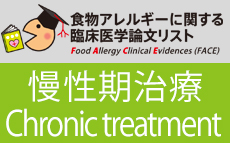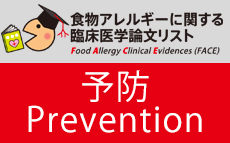植物食物アレルギーの有病率に関する系統的レビュー/The prevalence of plant food allergies: a systematic review.
更新日:2016年10月21日
| Author: | Zuidmeer L, Goldhahn K, Rona RJ, Gislason D, Madsen C, Summers C, Sodergren E, Dahlstrom J, Lindner T,Sigurdardottir ST, McBride D, Keil T. |
|---|---|
| Title: | The prevalence of plant food allergies: a systematic review. |
| Citation: | Journal of Allergy and Clinical Immunology. 2008 May;121(5):1210-1218 |
| URL: | https://pubmed.ncbi.nlm.nih.gov/18378288/ |
| Abstract: | BACKGROUND: There is uncertainty regarding the prevalence of allergies to plant food. OBJECTIVE: To assess the prevalence of allergies to plant food according to the different subjective and objective assessment methods. METHODS: Our systematic search of population-based studies (since 1990) in the literature database MEDLINE focused on fruits, vegetables/legumes, tree nuts, wheat, soy, cereals, and seeds. Prevalence estimates were categorized by food item and method used (food challenges, skin prick test, serum IgE, parent/self-reported symptoms), complemented by appropriate meta-analyses. RESULTS: We included 36 studies with data from a total of over 250,000 children and adults. Only 6 studies included food challenge tests with prevalences ranging from 0.1% to 4.3% each for fruits and tree nuts, 0.1% to 1.4% for vegetables, and < 1% each for wheat, soy, and sesame. The prevalence of sensitization against any specific plant food item assessed by skin prick test was usually < 1%, whereas sensitization assessed by IgE against wheat ranged as high as 3.6% and against soy as high as 2.9%. For fruit and vegetables, prevalences based on perception were generally higher than those based on sensitization, but for wheat and soy in adults, sensitization was higher. Meta-analyses showed significant heterogeneity between studies regardless of food item or age group. CONCLUSION: Population-based prevalence estimates for allergies to plant products determined by the diagnostic gold standard are scarce. There was considerable heterogeneity in the prevalence estimates of sensitization or perceived allergic reactions to plant food. |
| 邦文タイトル: | 植物食物アレルギーの有病率に関する系統的レビュー |
| 一般向け要約 | 植物食物アレルギーの有病率はわかっていない。様々な方法で調査された植物食物アレルギーの有病率を調査する。 1990年以降の研究で、果物、野菜/マメ科植物、木の実、小麦、大豆、穀類、種子に関する論文をMEDLINEで検索した。推定有病率は、食物別と調査方法別(経口負荷試験、スキンプリックテスト、血清IgE、自己/両親による申告)に分類して、メタアナリシスによって補われた。25万人以上の成人及び小児のデータを含む36論文が検索された。6つの研究だけ経口負荷試験による有病率を出しており、有病率は果物、木の実がそれぞれ0.1-4.3%、野菜は0.1-1.4%、小麦、大豆、ゴマは1%未満であった。一方スキンプリックテストによる有病率はいずれの食材も1%未満で、血清IgEでは小麦3.6%、大豆2.9%であった。果物と野菜に関して、自己/両親により申告された有病率は検査結果で客観的評価をした有病率よりも高い傾向にあった。しかし成人の小麦と大豆は検査結果で客観的評価をした有病率の方が高かった。メタアナリシスをしたところ食物や年齢層に関係なく研究間でのばらつきが多いことが明らかになった。 |
| 専門医コメント | 一般人口を対象にした研究で、ゴールドスタンダードである経口負荷試験による診断で有病率を調べた論文はあまりありません。このように調査方法でデータにばらつきがあるため、有病率が報告されていた場合にはどのような方法によるものか確認する必要があります。 |


